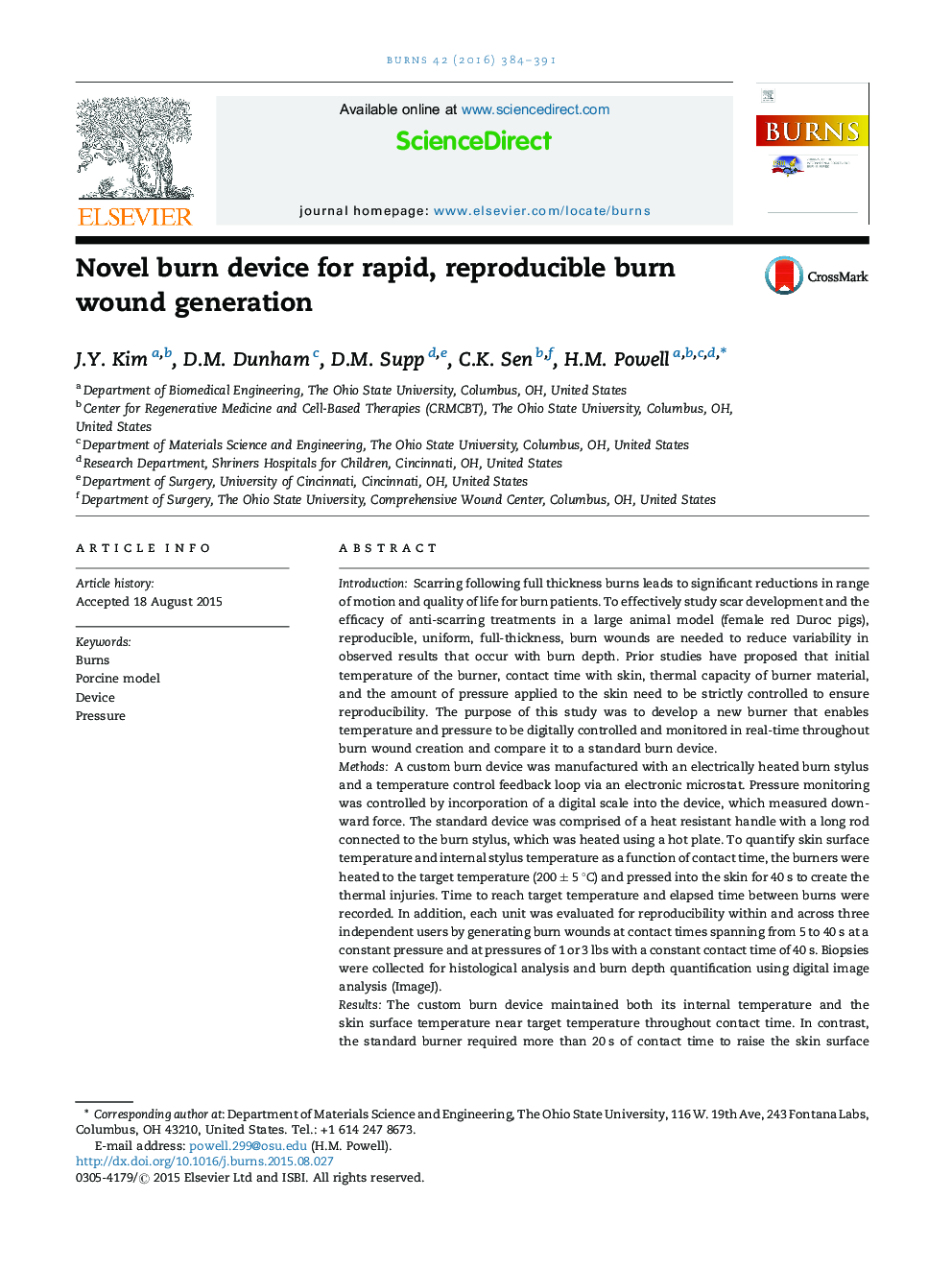| کد مقاله | کد نشریه | سال انتشار | مقاله انگلیسی | نسخه تمام متن |
|---|---|---|---|---|
| 3104045 | 1191639 | 2016 | 8 صفحه PDF | دانلود رایگان |
• We developed a novel burn device with continuous heat control and monitoring.
• The novel burn device digitally monitors pressure.
• The device was compared with standard heated block device in porcine burn model.
• The novel device was capable of delivering more rapid, reproducible burn wounds.
• The novel device produces burns of controlled, tailored depths independent of user.
IntroductionScarring following full thickness burns leads to significant reductions in range of motion and quality of life for burn patients. To effectively study scar development and the efficacy of anti-scarring treatments in a large animal model (female red Duroc pigs), reproducible, uniform, full-thickness, burn wounds are needed to reduce variability in observed results that occur with burn depth. Prior studies have proposed that initial temperature of the burner, contact time with skin, thermal capacity of burner material, and the amount of pressure applied to the skin need to be strictly controlled to ensure reproducibility. The purpose of this study was to develop a new burner that enables temperature and pressure to be digitally controlled and monitored in real-time throughout burn wound creation and compare it to a standard burn device.MethodsA custom burn device was manufactured with an electrically heated burn stylus and a temperature control feedback loop via an electronic microstat. Pressure monitoring was controlled by incorporation of a digital scale into the device, which measured downward force. The standard device was comprised of a heat resistant handle with a long rod connected to the burn stylus, which was heated using a hot plate. To quantify skin surface temperature and internal stylus temperature as a function of contact time, the burners were heated to the target temperature (200 ± 5 °C) and pressed into the skin for 40 s to create the thermal injuries. Time to reach target temperature and elapsed time between burns were recorded. In addition, each unit was evaluated for reproducibility within and across three independent users by generating burn wounds at contact times spanning from 5 to 40 s at a constant pressure and at pressures of 1 or 3 lbs with a constant contact time of 40 s. Biopsies were collected for histological analysis and burn depth quantification using digital image analysis (ImageJ).ResultsThe custom burn device maintained both its internal temperature and the skin surface temperature near target temperature throughout contact time. In contrast, the standard burner required more than 20 s of contact time to raise the skin surface temperature to target due to its quickly decreasing internal temperature. The custom burner was able to create four consecutive burns in less than half the time of the standard burner. Average burn depth scaled positively with time and pressure in both burn units. However, the distribution of burn depth within each time-pressure combination in the custom device was significantly smaller than with the standard device and independent of user.ConclusionsThe custom burn device's ability to continually heat the burn stylus and actively control pressure and temperature allowed for more rapid and reproducible burn wounds. Burns of tailored and repeatable depths, independent of user, provide a platform for the study of anti-scar and other wound healing therapies without the added variable of non-uniform starting injury.
Journal: Burns - Volume 42, Issue 2, March 2016, Pages 384–391
